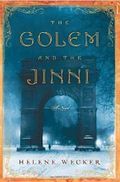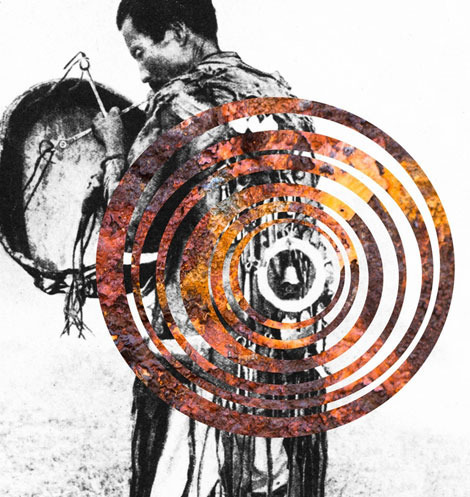Midori Snyder's Blog, page 53
August 22, 2013
The New Oral Tradition.
Watch this fabulously entertaining video of storyteller and performer, Shlomo recounting an evening spent at his the home of his Jewish - Iraqi grandparents. And then...treat yourself some more and head over to Band of Wild Petticoats to read this fascinating response to the film that intermingles oral narrative theory, Socrates, belly dancing, and the transformation of the storyteller tradition. A total blast.
"The act of
reading a text is markedly different
from the experience of hearing a story performed aloud: the former is a
solitary act that requires the reader to consume and process content
separated
from external influences, while in the latter, an audience is expected
to laugh
or cry at the same junctures during a story’s oral performance. So how
can I say that this oral narrative (the video above) can be considered
the same as a short story if the impact on the audience is so different
for textually and orally constructed stories? " --Taiko Haessler, (In Short: Belly Dancing and Oral Narrative.)
Tijuanalandia, The Other Bordertown: A Return
There's a new article featuring Laura Shipley's intriguing photography of the US- Mexican border which reminded me of another photojournalist I really admire, Jason Thomas Fritz, whose work on and in Tijauna -- the quintessential bordertown -- is remarkable too and featured on his blog Tiajuanlandia. So I thought I would repost this original look at his work. (And you can check out his more recent Instagram account which a huge trove of his photographs -- though without his insightful commentary.)
Lately, I have been following Tijuanalandia,
the astonishing blog/photographic journal of Jason Thomas Fritz, a
graduate student working on a project to photo-document life in Tijuana,
perhaps one of the most famous (and infamous) bordertowns between the
US and Mexico. His photographs, and occasional reportage on politics, sports, and popular culture are absolutely
fascinating.
Here is Jason's description of his project: "Tijuanalandia is the
creation of Jason Thomas Fritz, a journalist and graduate student at
San Diego State University living in Tijuana. Acknowledging that Tijuana
defies any attempt at defining it, Tijuanalandia aims to explore this
most misunderstood of cities through visual dispatches. The outsider’s
portrait of the city that emerges is an effort to challenge the
narratives of crime, violence and vice that dominate popular conceptions
of Tijuana."
There are moments in this journal that are just surreal -- such as La Mona -- a five story tall sculpture of a completely nude woman in the middle of a slum neighborhood. Or A Toy Story,
about the man who has collected over 30,000 discarded children's toys
and affixed them in a riotous collage on every surface of his sun-baked
house. There are soccer games and bullfights, ice cream parlors, the late night scenes of local bars, the itinerant musicians, and the border, with its daily traffic.
August 21, 2013
Spook's Apprentice versus Seventh Son
 Ok..so I have been reading The Last Apprentice series by English author Joseph Delaney, and really digging them. They are for around 10-15 year old readers -- and they are really scary -- dark, creepy encounters at night with very powerful forces. The protagonist is young in the first book -- a mere 13 and the seventh son of a seventh son when he is apprenticed to a Spook -- a man who must spend his life chasing and confining harmful ghosts and supernatural beings. Thomas is smart, but a kid, and he spends most of his time in book one Revenge of the Witch, learning the basics of digging holding pens for nasty spirits, boggans, and witches, a little Latin, and a lot about how to walk for days without getting hungry. Delaney is one of those lovely north country British authors who writes so well about the country, its folklore, and dark things underground (and brings to mind another north country and award winning author David Almond, whose work I also admire). Just for fun, here is a video interview of Delaney (done for Harper Children's Books)-- I do love his thick, treacle-y accent and the obvious love he has for his characters and their stories.
Ok..so I have been reading The Last Apprentice series by English author Joseph Delaney, and really digging them. They are for around 10-15 year old readers -- and they are really scary -- dark, creepy encounters at night with very powerful forces. The protagonist is young in the first book -- a mere 13 and the seventh son of a seventh son when he is apprenticed to a Spook -- a man who must spend his life chasing and confining harmful ghosts and supernatural beings. Thomas is smart, but a kid, and he spends most of his time in book one Revenge of the Witch, learning the basics of digging holding pens for nasty spirits, boggans, and witches, a little Latin, and a lot about how to walk for days without getting hungry. Delaney is one of those lovely north country British authors who writes so well about the country, its folklore, and dark things underground (and brings to mind another north country and award winning author David Almond, whose work I also admire). Just for fun, here is a video interview of Delaney (done for Harper Children's Books)-- I do love his thick, treacle-y accent and the obvious love he has for his characters and their stories.
After so many years of crafting the series (there are now 11 books!) Hollywood has taken notice and will be releasing a film in January, 2014 "inspired" by the series. But one look at the trailer tells me that in their hands, the story has lost its charm and in a way, its innocence. In the novels, young Thomas Ward struggles to be the sort of brave child his family and the community expects of him, and to accept a life of loneliness and pariah status as a "Spook," someone who protects the rest of the population from supernatural harm. In Delaney's books, there are a lot of frightening scenes, waiting tensely in the dark, muffled in a silence broken only by the ominous sounds of snuffling, chomping, and the hard breathing of a frightened hero. The Spook and his Apprentice use no magic wands or weapons -- just a stout staff, and elements like salt, and iron.
But, in Hollywood's vision, everything is large, deafening, and over the top battles and really lethal looking weapons. Thomas Ward is in his 20's, the witch Mother Malikin (who's a close cousin in the novels is more Baba Yaga than Jullian Moore) is a seductive, dangerous beauty. Will I go and see the movie...yea, of course I will. But it's truly a beast of a different stripe and beyond a basic understanding of the forces involved taken from the novels, it has recreated itself as a story for grownups raised on CGI. Pity too ... because the books give children and young adult readers something this movie can't -- a young, affable hero like them, who pushes back the dark with his courage and his wits.
August 20, 2013
Helene Wecker: The Golem and the Jinni
I had planned on writing a full review of Helene Wecker's fantasy novel The Golem and the Jinni and before I could get to it, I discovered a terrific review by Susann Cokal at the NYT. It pretty much said everything (and much more elegantly I think) that I was thinking about the novel. So let me be brief here. Buy the novel. You will love it. And here are two reasons (among many) why I found it so remarkable.
 1. The two most important characters are both fantastic creatures -- 1) a newly "born to life" Golem in the form of a young woman who almost immediately becomes master-less, and whose only purpose is to serve the needs of humans around her (imagine the din of those endless requests) and 2) a 2,000 year old entirely self absorbed, amoral Syrian Jinni, recently freed from a long captivity in a brass bottle. Both are immigrants to NYC in the very late 19th century. The novel turns on how these two compelling creatures come to recognize each other across a huge city of immigrants, and learn how to adapt as their interaction with human beings change them in unexpected ways. It is about discovering the self (even when the self is a complicated, fantastic creature) and discovering the possibilities of life in radically new context. Their philosophical conversations (and fights) alone are worth reading the novel.
1. The two most important characters are both fantastic creatures -- 1) a newly "born to life" Golem in the form of a young woman who almost immediately becomes master-less, and whose only purpose is to serve the needs of humans around her (imagine the din of those endless requests) and 2) a 2,000 year old entirely self absorbed, amoral Syrian Jinni, recently freed from a long captivity in a brass bottle. Both are immigrants to NYC in the very late 19th century. The novel turns on how these two compelling creatures come to recognize each other across a huge city of immigrants, and learn how to adapt as their interaction with human beings change them in unexpected ways. It is about discovering the self (even when the self is a complicated, fantastic creature) and discovering the possibilities of life in radically new context. Their philosophical conversations (and fights) alone are worth reading the novel.
 2. I also love novels that make the setting into a character in the book. Here is the fullness of a New York in 1899, a patchwork of immigrant neighborhoods -- each one distinct in community, foods, smells, houses of worship, tenements, and shops. Wecker renders in rich and evocative details all these different neighborhoods -- from the Jewish neighborhoods, the Christian Syrian enclaves, the bakeries, the docks and its desperate immigrants, the glittering dance halls, a luminous Central Park, the wealthy homes up the upper west side, and the poverty of the Bowery -- complete with almost mirror version of the city on the tenement roof tops.
2. I also love novels that make the setting into a character in the book. Here is the fullness of a New York in 1899, a patchwork of immigrant neighborhoods -- each one distinct in community, foods, smells, houses of worship, tenements, and shops. Wecker renders in rich and evocative details all these different neighborhoods -- from the Jewish neighborhoods, the Christian Syrian enclaves, the bakeries, the docks and its desperate immigrants, the glittering dance halls, a luminous Central Park, the wealthy homes up the upper west side, and the poverty of the Bowery -- complete with almost mirror version of the city on the tenement roof tops.
And I should mention too that Wecker's prose is wonderful -- deliberate, clean, and elegant .Really, trust me. You will not be disappointed.
Embroidered Book Covers: Jillian Tamaki
A while back, Penguin launched a wonderful little project "Penguin Threads" which invited embroidery artists to create full embroidered jackets for novels. The artists sketched their designs (including the cover flaps) and then embroidered them. The covers were printed with embossed textures to give the suggestion of the stitches. My favorite were the three covers created by Jillian Tamaki (all of her illustrative work is splendid and it is so cool that she is also skilled with a needle and thread.) Do check out her website to see how these beauties were created.
August 19, 2013
Watching the Internet: Black Cowboys, Angels, and Ninja Breakups
Two wonderful and very different films.
The first "Wildcat" is a gorgeous tribute to the town of Grayson, Oklahoma (whose original name was Wildcat). A small, rural town, (population 158) mostly African American, this film pays tribute to the slow communal way of life in a small town -- the rodeo, the cowboys, the beauty queens, the church, nature. From film maker Khalil Joseph: "Wildcat is a state of mind; an experiment inspired by the composition and performance of jazz music. The characters that populate this world are actual – cowboys; and envisioned – angels. The town they all inhabit is real – Grayson, Oklahoma". (Make your screen large -- it's worth it!)
The second film is a poignant animated film "Requiem for a Romance" from Jonathan Ng, visualizing a couples' breakup over the phone as a battle between ninjas. It's really compelling and strangely works exceedingly well -- somehow, the sword slashing ninjas and the phone conversation just seem to highlight each other with perfect symmetry. And this film too has an original score -- a collaboration of Vid Cousins and Kid Koala.
August 18, 2013
Listening to the Internet: Bach and Mandolin
Chris Thile is probably one of the most notable mandolin players out there with an ability to play anything, any style of music with verve and authority on his instrument -- whether it is blues, folk, country, traditional Celtic reels, jazz improvisation -- or more recently a gorgeous new collection of The Bach Partitas and Sonatas. He was featured on Sound Check "Chris Thile Bach on Mandolin" and oh how wonderful to hear the entire interview and musical interludes. Here's one of my favorites -- Thile who is known to play with incredible speed and fluidity, going slow and deliberately through Bach's "Sonata No. 1 in G Minor, Sicilianna."
August 17, 2013
Reading the Internet: Shamans, Rules, and Madmen
Here is a fast round up of some of the more interesting articles and works online that have recently nourished my thinking. Better than cat videos.
From The Appendix (journal of narrative and experimental history: Supernatural Sound: Science and Shamanism in the Arctic by Tim Fulford. This is a stunning article on the late 19th century encounters between Arctic explorers and shamans whose unique vocalizations produced supernatural experiences that the ardent scientists could not explain.
From Open Culture: Cormac McCarthy's Three Punctuation Rules. What I love about master fiction writers is their ability to know why certain grammar rules exist and then pretty much dismiss them in order to create a readable fiction that is somehow more intense, more intimate. "“I believe in periods, in capitals, in the occasional comma, and that’s it.” Forget quotation marks -- one should be able to write so as to make it clear who is talking.
From The New Yorker, Letter From Lagos, Madmen and Specialists by Teju Cole. This is a terrific review of Nigerian author Wole Soyinka's drama (Madmen and Specialists and Death won the Nobel Prize for Literature in 1986 and Death and the King's Horseman is still taught in university classes on African literature) -- as well as his complicated and fascinating life. At 80, Soyinka is still writing and fearlessly ruffling the political feathers of African politicians.
Art: From The Appendix: Benjamin Breen, 2013, based on an early 20th century photograph of an Inuit shaman.
August 15, 2013
Holy Days of Obligation: The Assumption of the Blessed Virgin Mary
I enjoy these days, for they have their own stories, their own prayers, and their own hymns. For a little while, we stop our noisy routines and settle into a contemplation of the mysteries.
It is the will of God that we should have nothing which has not passed through the hands of Mary.
- St Bernard of Clairvaux
Art: Baroque painting of Our Lady of Lledó, Spain.
August 13, 2013
Unburdening and Making Progress.
I am almost at the point where several key projects that have been
burning through my midnight oil (and keeping me from the blog) are
almost over. It has been a busy time and I recognized something of my recent state of mind in this terrific Tucson artist Katheryn Polk print. I should be making my way back a bit more regularly now.
My favorite project was to recently complete the "50 page-composed-in-hell-application" for nonprofit status for a local boxing gym that will teach boxing to Tucson's at-risk youth. Stop by House of Warriors Tucson to have a peek at all the goings on. Great instructors, great families, great kids. Very happy to have been part of the formation of this wonderful place.
Midori Snyder's Blog
- Midori Snyder's profile
- 87 followers














